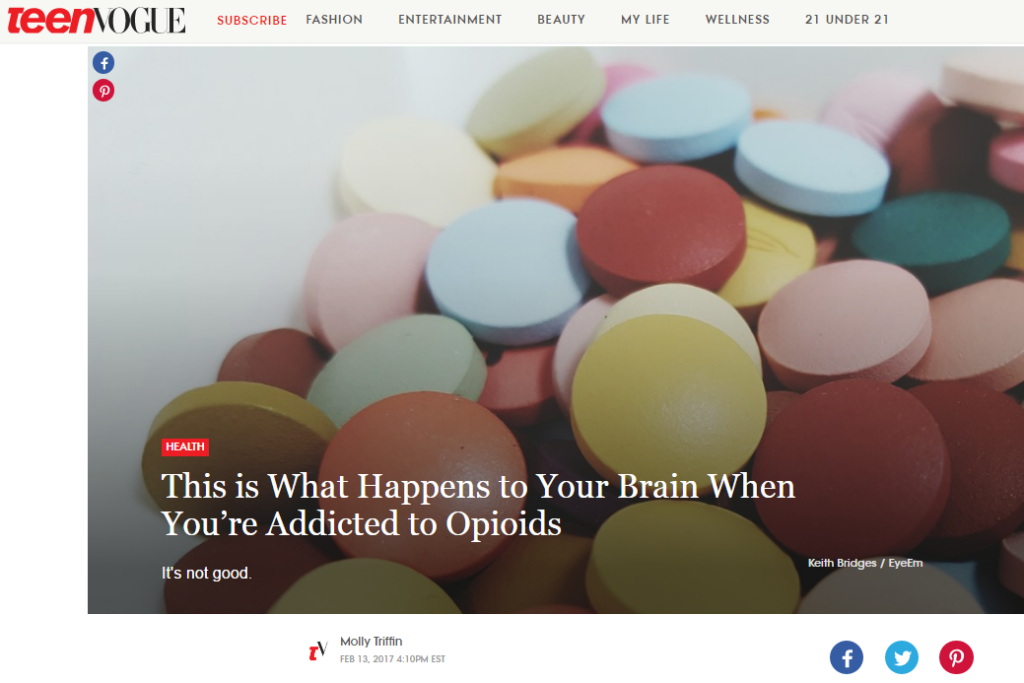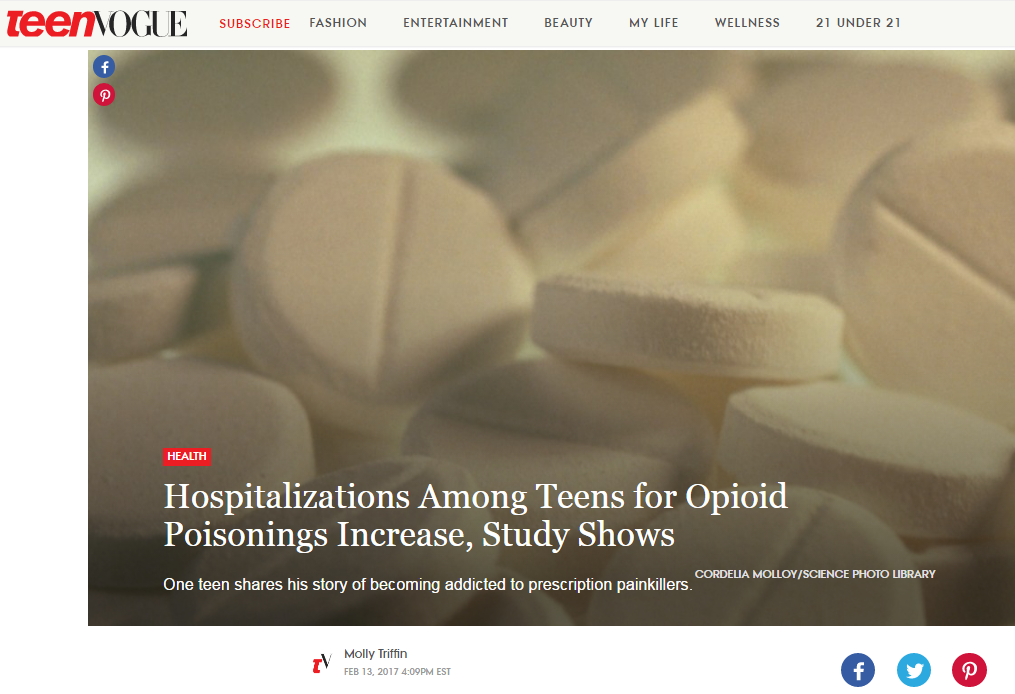
March 10, 2017 |
Teen Vogue & The Recovery Research Institute Team Up to Tackle the Opioid Epidemic in 2 New Articles
Teen Vogue & the Recovery Research Institute team up in two new articles on addiction to educate teens around the United States about the dangers of opioids & the neurological underpinnings of addiction.
Articles feature interviews with:
Recovery Research Institute Director Dr. John F. Kelly.
This is What Happens to Your Brain When You’re Addicted to Opioids

To this day, Emma*, 19, can’t step foot in her childhood home without having flashbacks to the most terrifying moment of her life. Three years ago, a loud banging woke her up in the middle of the night. She jumped out of bed, rushed out of her room, and stopped cold with fear: Her big sister, now 22, lay unconscious on the living room floor. “She looked just…gone,” Emma says. “I lifted her arm, let it drop, and it collapsed to the ground. I remember thinking, Is this it?”
It felt like she was trapped in a bad dream—only this was real. Her brother, now 23, shook her sister’s lifeless body, screaming into her face, “Come on, you can do it!” Her dad was on the phone with the police, his voice panicky. The family dog was barking like crazy…
...Continue Reading on Teen Vogue.com
Hospitalizations Among Teens for Opioid Poisonings Increase, Study Shows

A recent study published in JAMA Pediatrics revealed a scary reason why teens are ending up in the ER: overdoses from prescription and illicit drugs, specifically opioids and heroin.
Prescription opioids are substances that ease discomfort. They do this by “attaching to the opioid receptors in the brain, which helps to very effectively kill pain for a while,” says John F. Kelly, Ph.D., associate professor of psychiatry in addiction medicine at Harvard Medical School and founder and director of the Recovery Research Institute. “After a surgery, accident, or injury, you may be prescribed an opioid in pill form under the brand names of OxyContin, Percocet, or Vicodin, among others…
...Continue Reading on Teen Vogue.com
